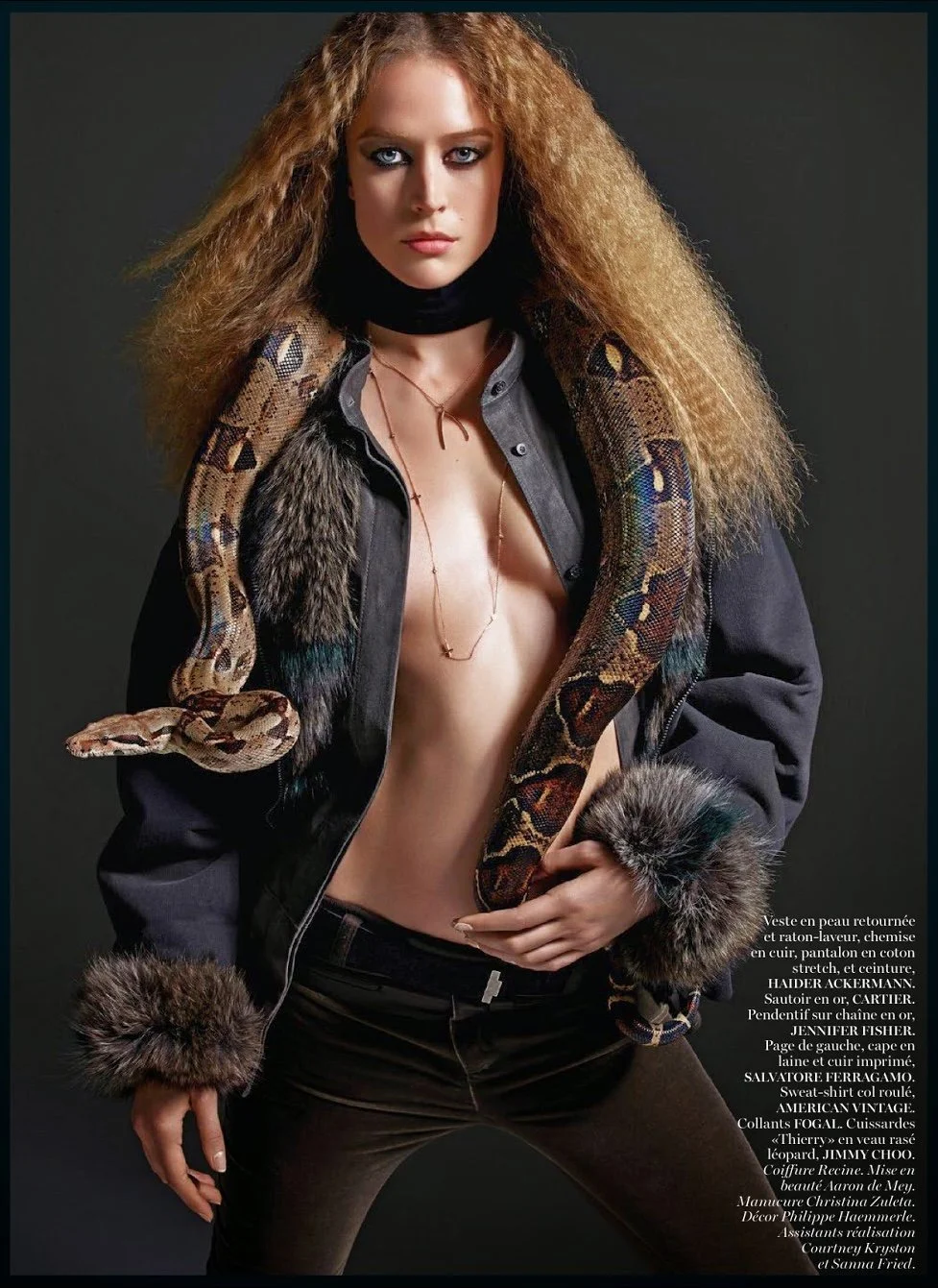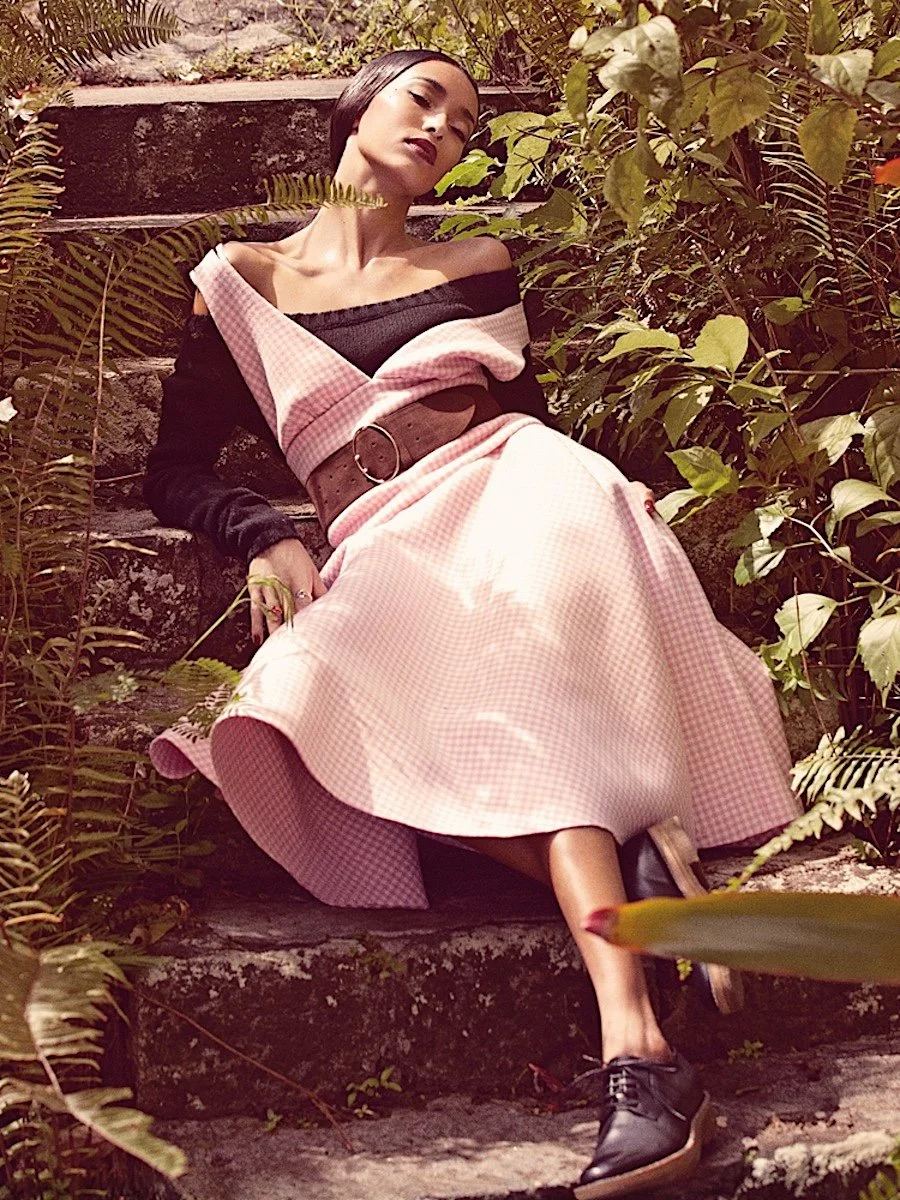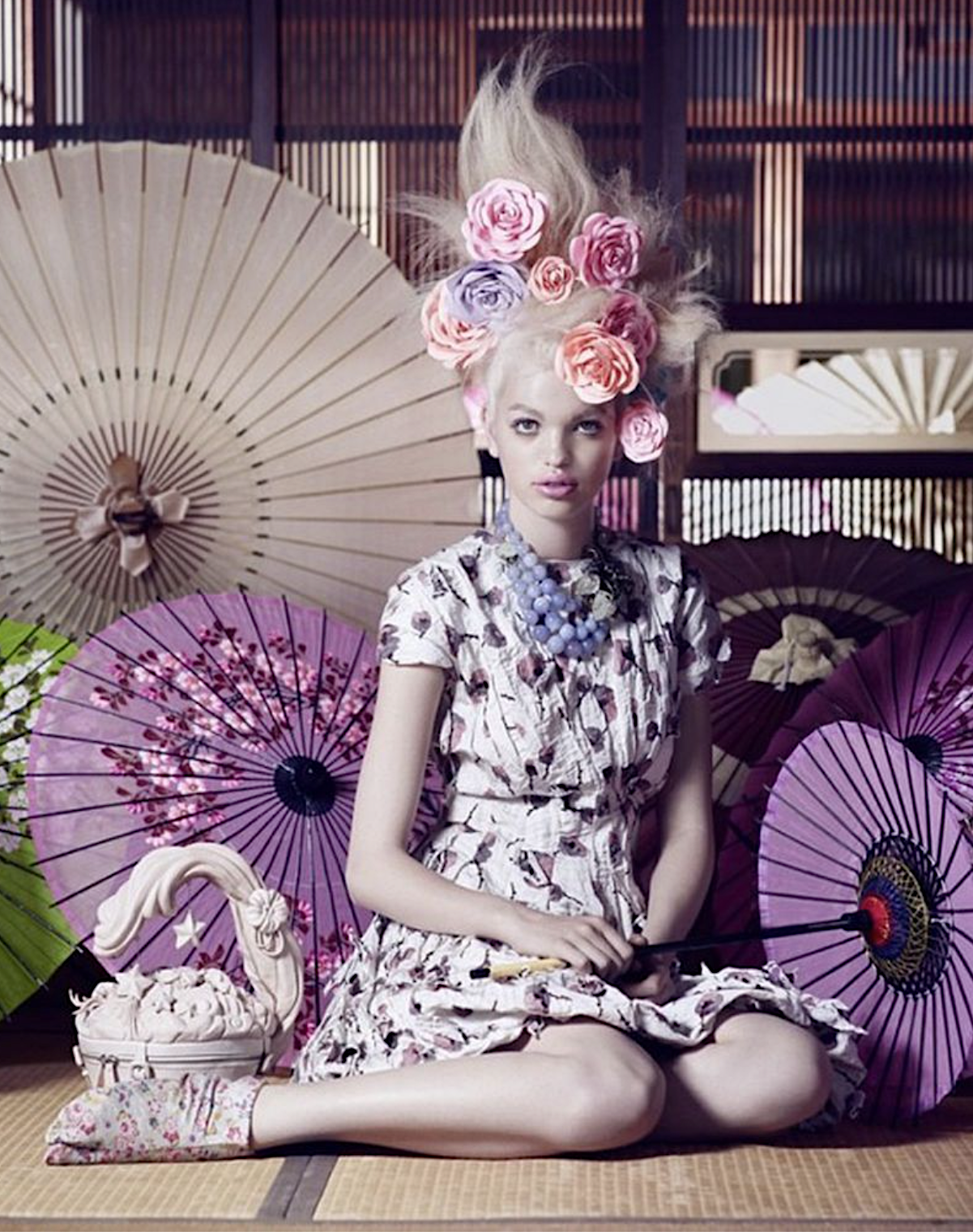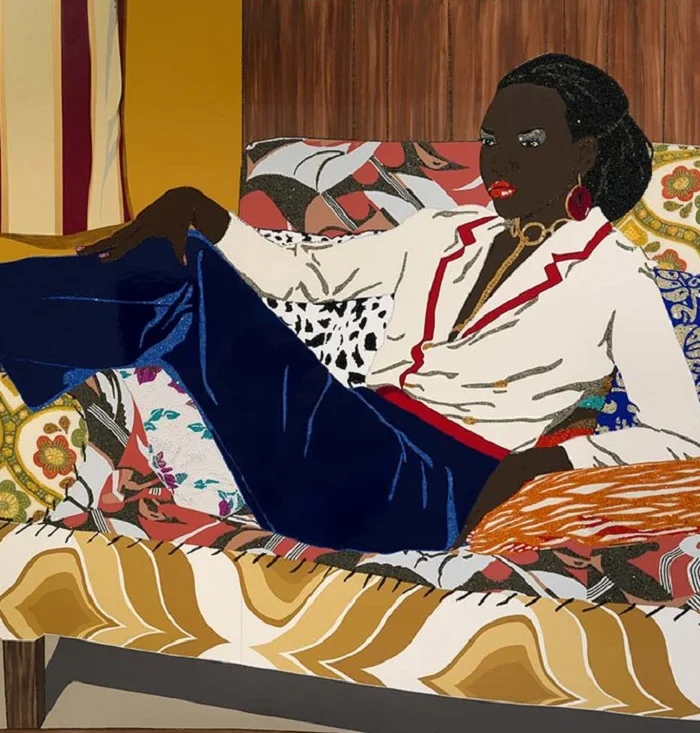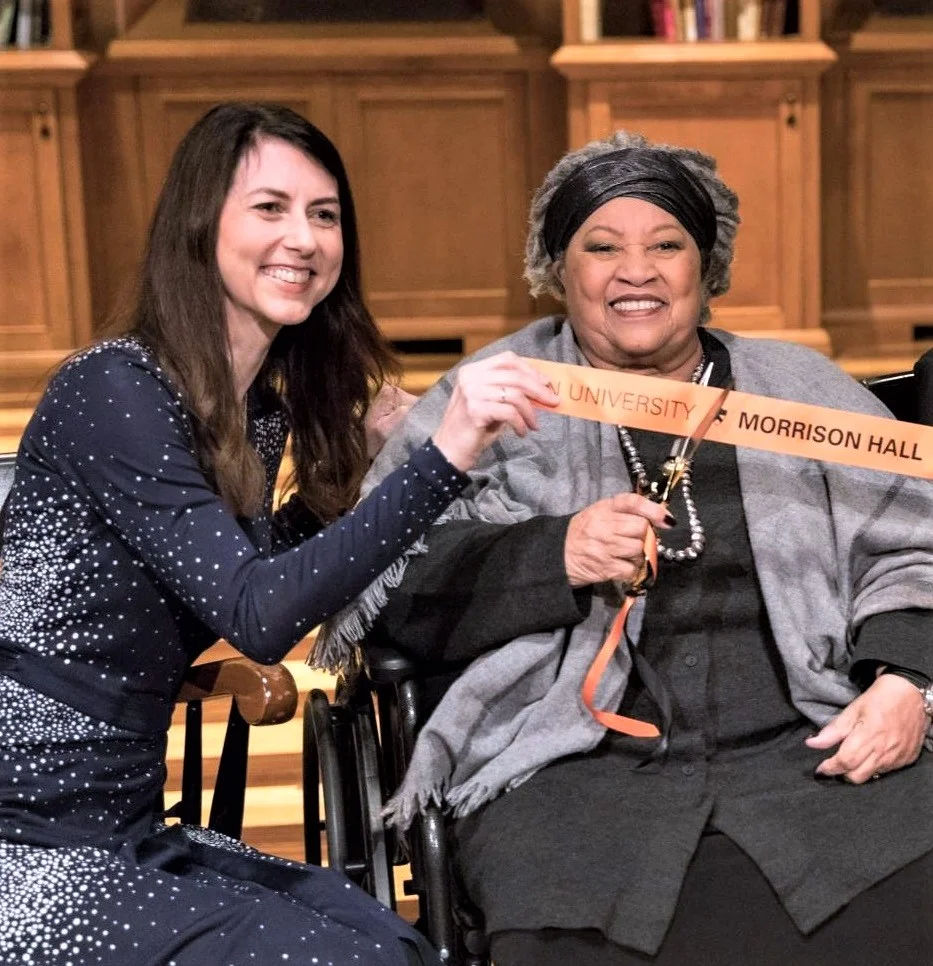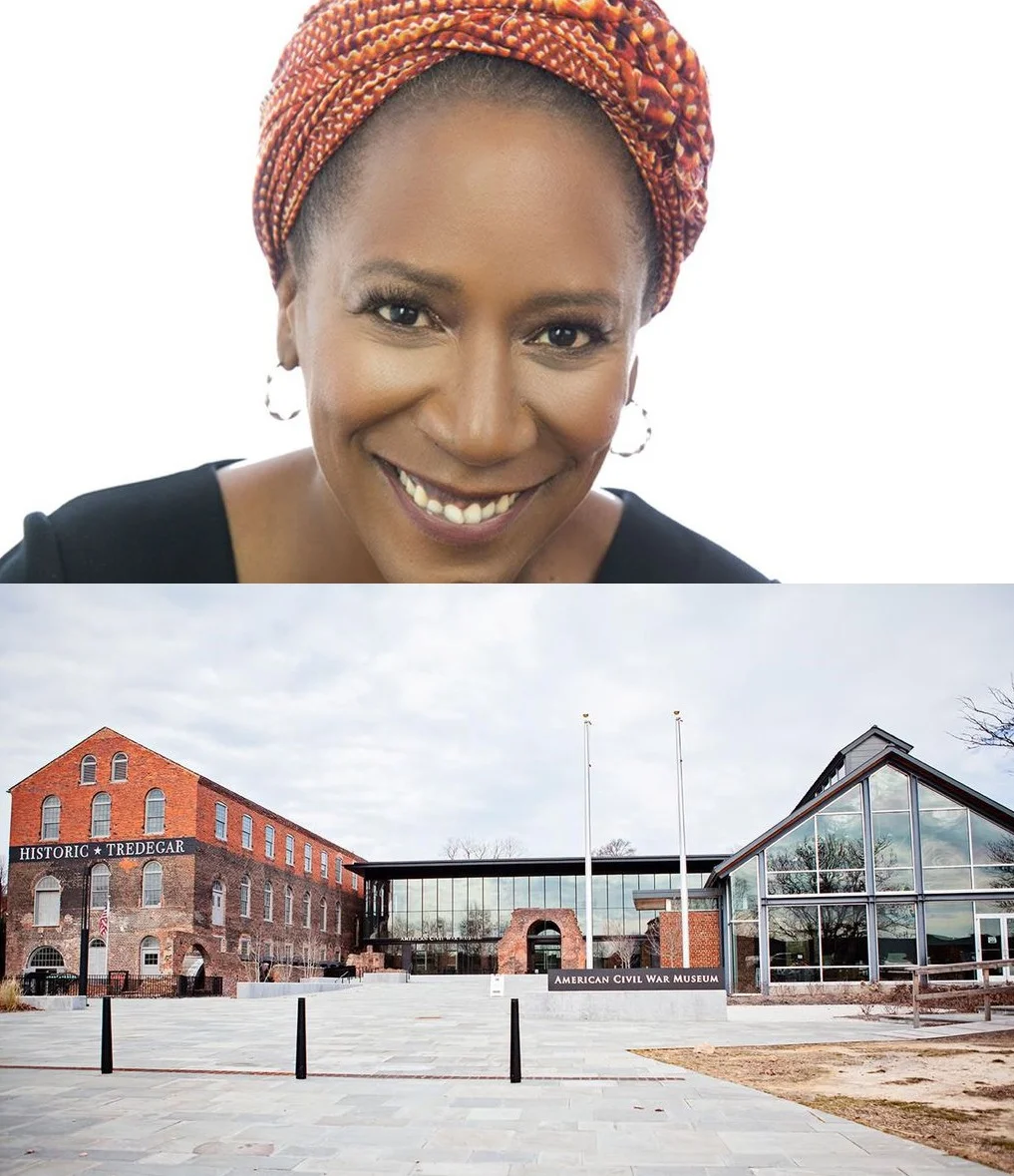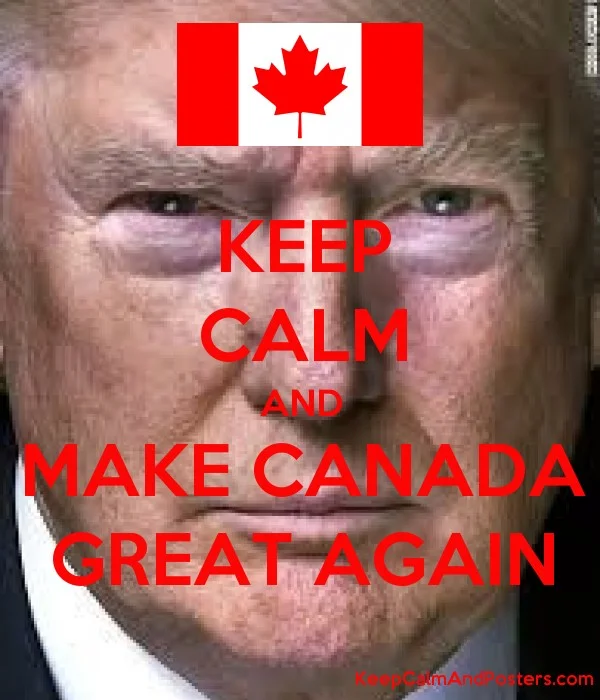The Fierce Pride and Passion of Rhinestone Fashion | We Spend Time With Mickalene Thomas
/The Fierce Pride and Passion of Rhinestone Fashion | We Spend Time With Mickalene Thomas
Contemporary artist Mickalene Thomas is best known for her large-scale paintings of black women posed against boldly patterned backgrounds and adorned with rhinestones. Illustrative of the artist’s signature style, her 2010 Portrait of Mnonja depicts a striking female figure reclining on a couch.
Visitors, who find their way to the high-ceiling third floor gallery of the Smithsonian American Art Museum, consistently gather round this painting, fascinated by its bright colors and drawn to its subject—an elegant and poised African-American woman.
“She is owning and claiming her space, which is very exciting,” reveals the artist in a 2017 SAAM interview. The woman’s crossed ankles are perched on the sofa’s armrest, and her fuchsia high heels dangle over the edge. Her right hand rests on her knee and her fingers evoke a dancer’s enviable combination of strength and grace. Exuding an air of power and sophistication, Mnonja literally sparkles from head to toe—her hair, makeup, jewelry, clothes, fingernails and shoes all glisten with rhinestones.
